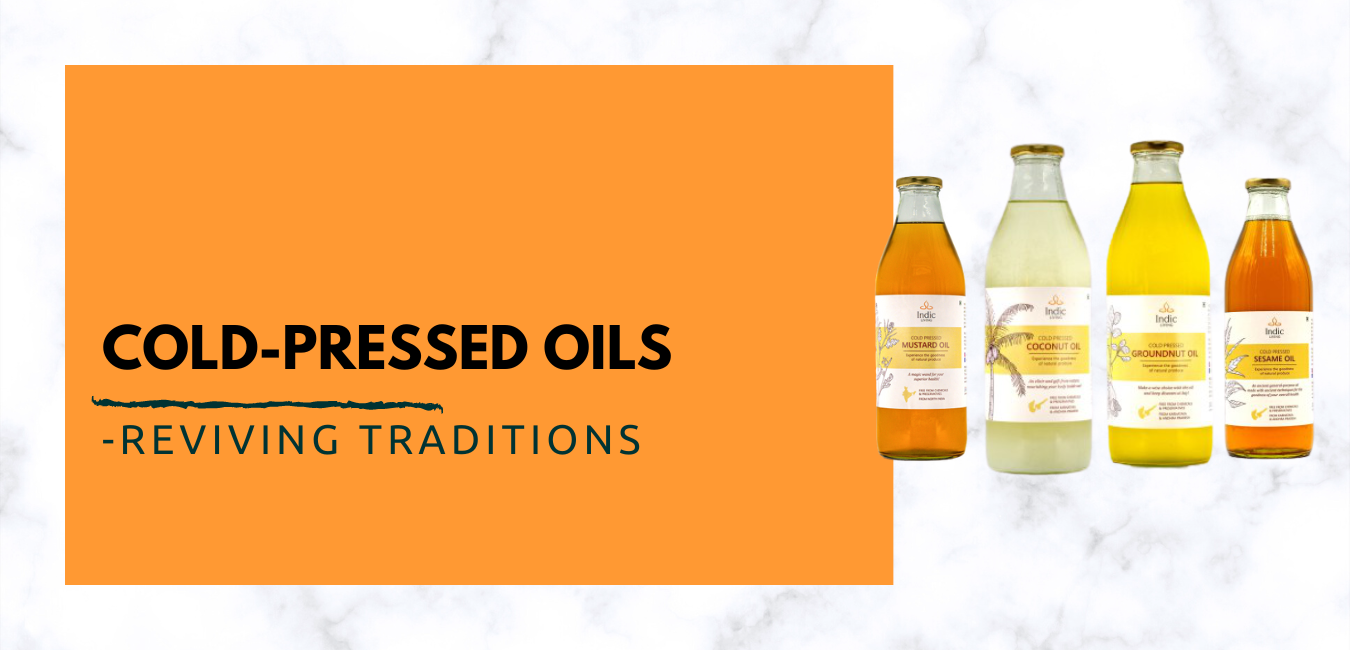Indian cuisine is incredibly diverse, and each region has its unique indigenous meals and traditional dishes. Oil is the main ingredient for any recipe to start with and that oil has to be the best one to get all the nutritional requirements for your body.
Well, for generations, our grandparents have been using bull-driven oils and with time these have vanished and got replaced with refined oil and everyone started using them without understanding their adverse effects. Good to see CP oils gaining popularity over a period of time and many started incorporating them into their food. Let us see an overview of these oils.
Cold-pressed oils have gained popularity in India due to their perceived health benefits and minimal processing methods. In India, several types of cold-pressed oils are commonly available. Some popular varieties include:
- 1. Cold-pressed Coconut Oil: Made from the pressing of fresh coconut flesh also called virgin coconut oil or dried coconut kernels, it is widely used in Indian cooking for its distinctive flavor and aroma. It is also used for skin care and hair care purposes.
- 2. Cold-pressed Groundnut/Peanut Oil: Groundnut oil is extracted from peanuts and is widely used for frying, sauteing, and as a base for various Indian dishes. It has a mild flavor and a high smoking point, making it suitable for cooking at high temperatures.
- 3. Cold-pressed Sesame Oil: Sesame oil, also known as gingelly oil, is extracted from sesame seeds. It has a nutty flavor and is commonly used in Indian cuisine for its unique taste. It is also used for massages and oil pulling.
- 4. Cold-pressed Mustard Oil: Mustard oil is derived from mustard seeds and has a pungent flavor. It is widely used in certain regional cuisines in India, especially in the eastern and northeastern parts of the country. Mustard oil is also used in traditional Indian medicine.
- 5. Cold-pressed Sunflower Oil: Sunflower oil is extracted from sunflower seeds and is known for its neutral taste and high smoking point. It is often used for frying and baking purposes.
The manufacturing process of cold-pressed oil involves extracting oil from seeds, nuts, or fruits using a mechanical pressing method without the use of heat or chemicals. Here is a general overview of the cold-pressed oil manufacturing process:
- Seed/Nut/Selection: High-quality seeds or nuts are selected for the oil extraction process. The quality of the raw material plays a crucial role in the final product.
- Cleaning and Drying: The selected seeds, nuts, or fruits are thoroughly cleaned to remove any impurities, such as dust, dirt, or stones. After cleaning, they are dried to reduce moisture content, ensuring better oil extraction and longer shelf life.
- Pressing: The dried seeds, nuts, or fruits are fed into a mechanical press. The press applies pressure to extract oil from the raw material. The pressure can be applied through various methods, including screw presses or hydraulic presses.
- Oil Separation: The mechanical pressing process separates the oil from the solid components, such as the seed or nut residue, also known as the cake. The oil is collected separately, while the cake is usually further processed or used for other purposes.
- Filtration: The extracted oil undergoes filtration to remove any remaining solids or impurities. This step helps to improve the clarity and purity of the oil.
- Packaging: After filtration, the cold-pressed oil is packaged in suitable containers, such as bottles or jars, to maintain its freshness and prevent oxidation.
It’s important to note that the health benefits of CP oils can vary depending on factors such as the type of seeds, overall diet, and individual health conditions. Moderation and balance are key when incorporating any type of oil into a healthy diet.
Indic Living has the best quality cold-pressed oils which are made absolutely in the traditional method of the oil extraction process.
